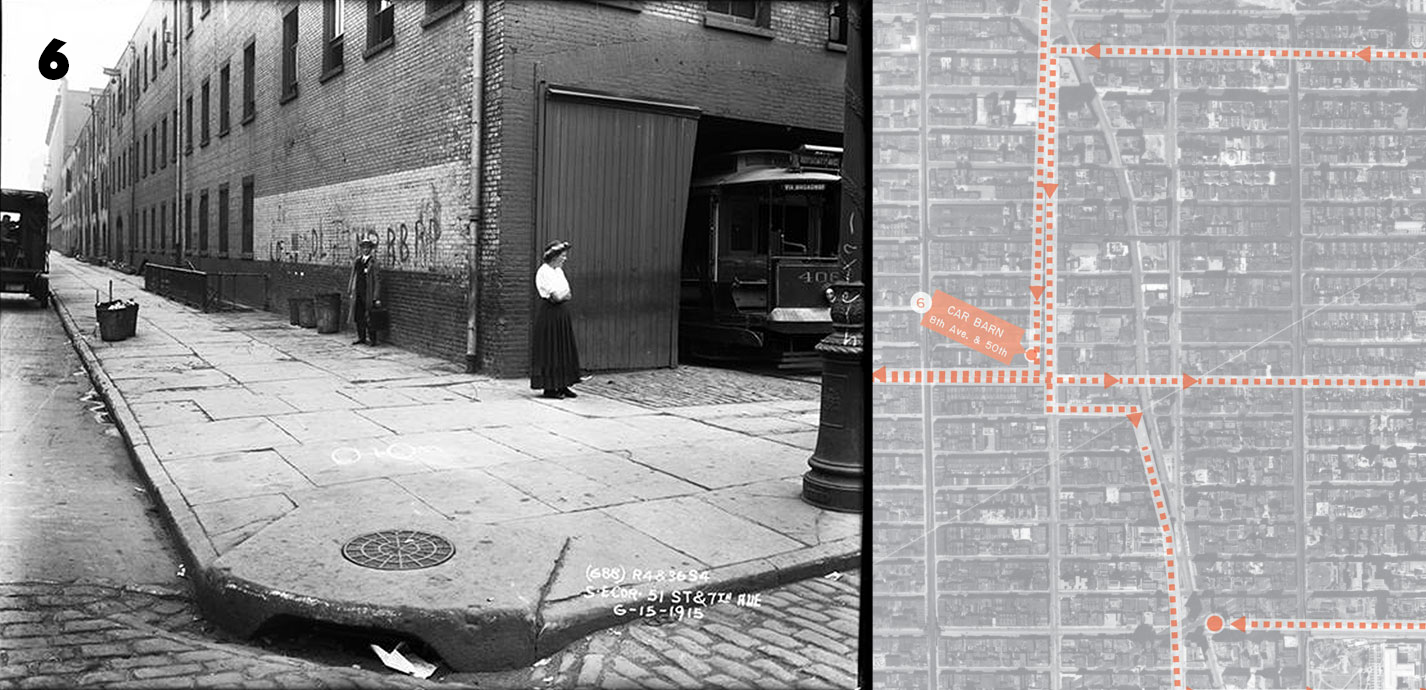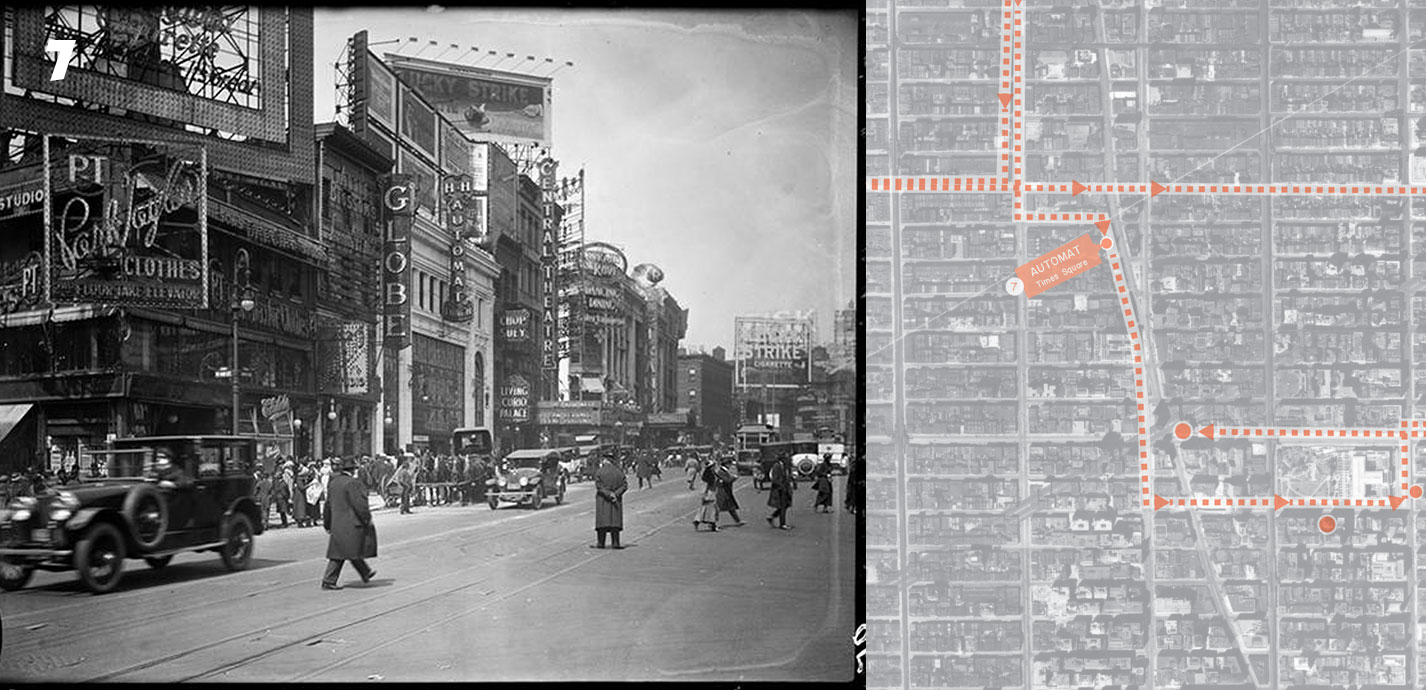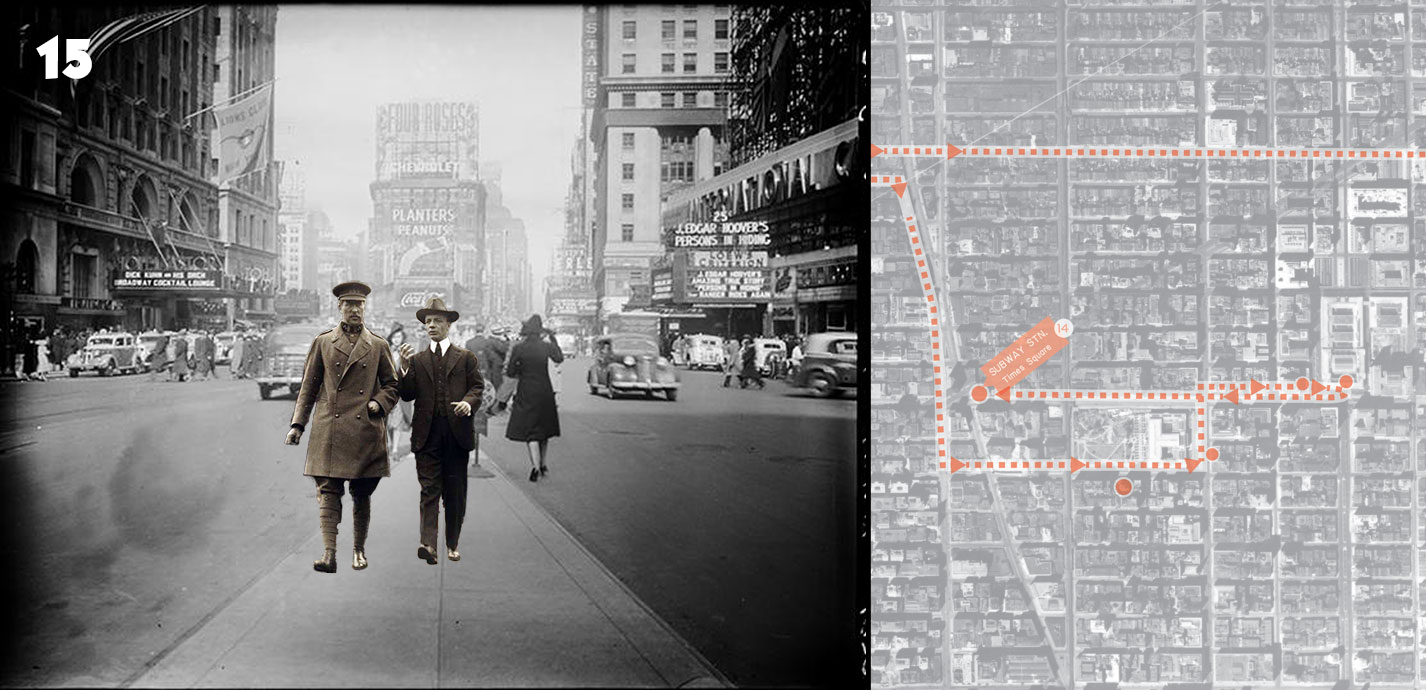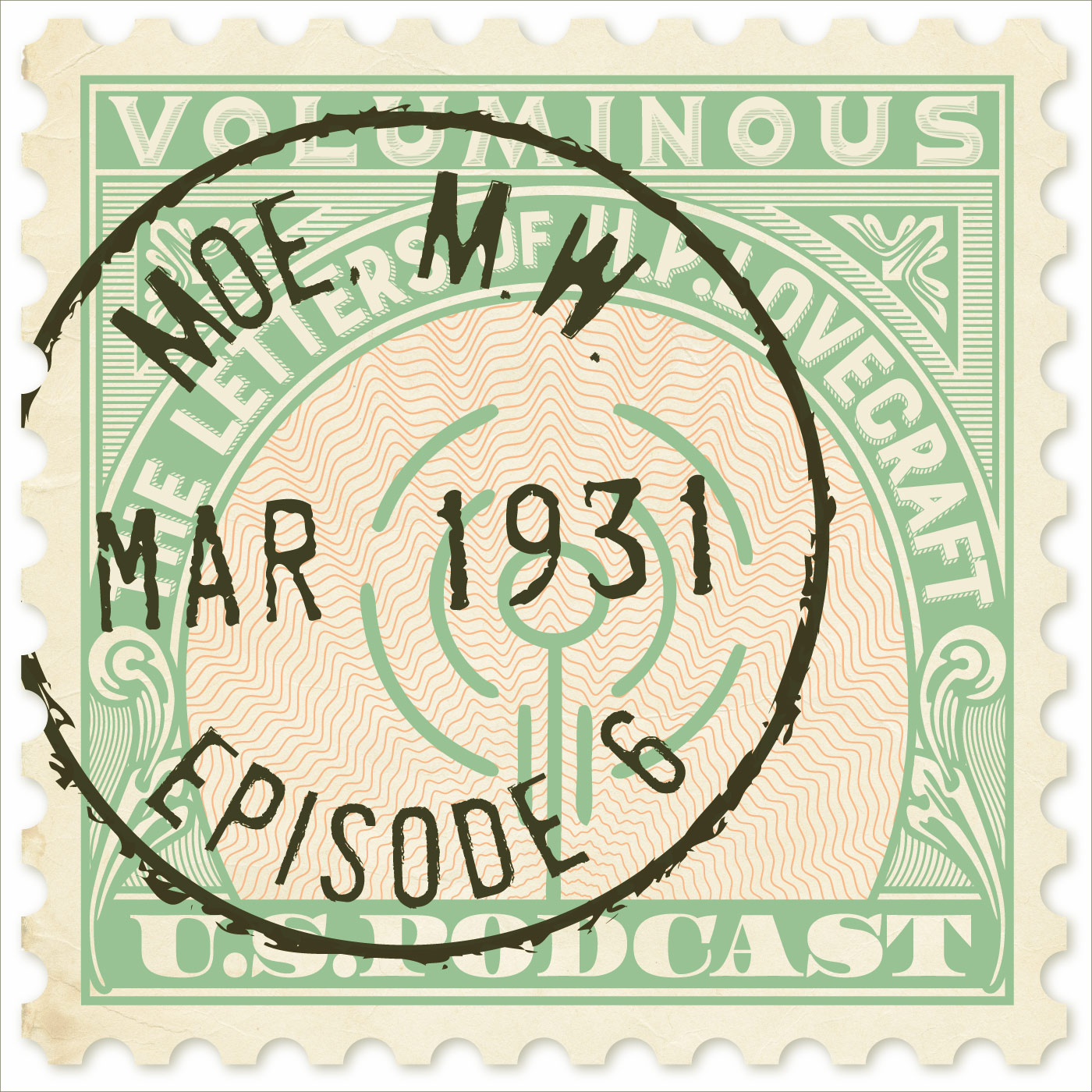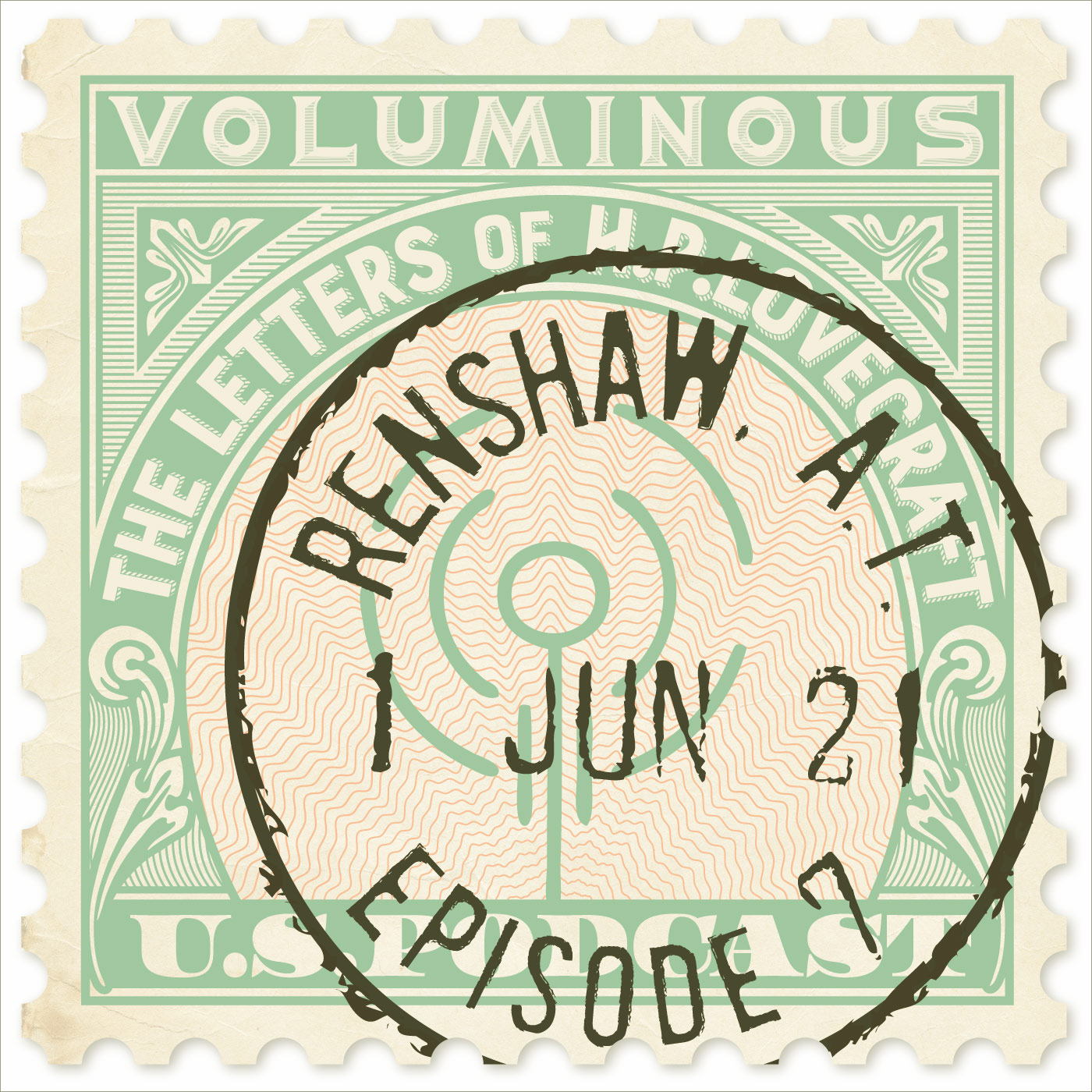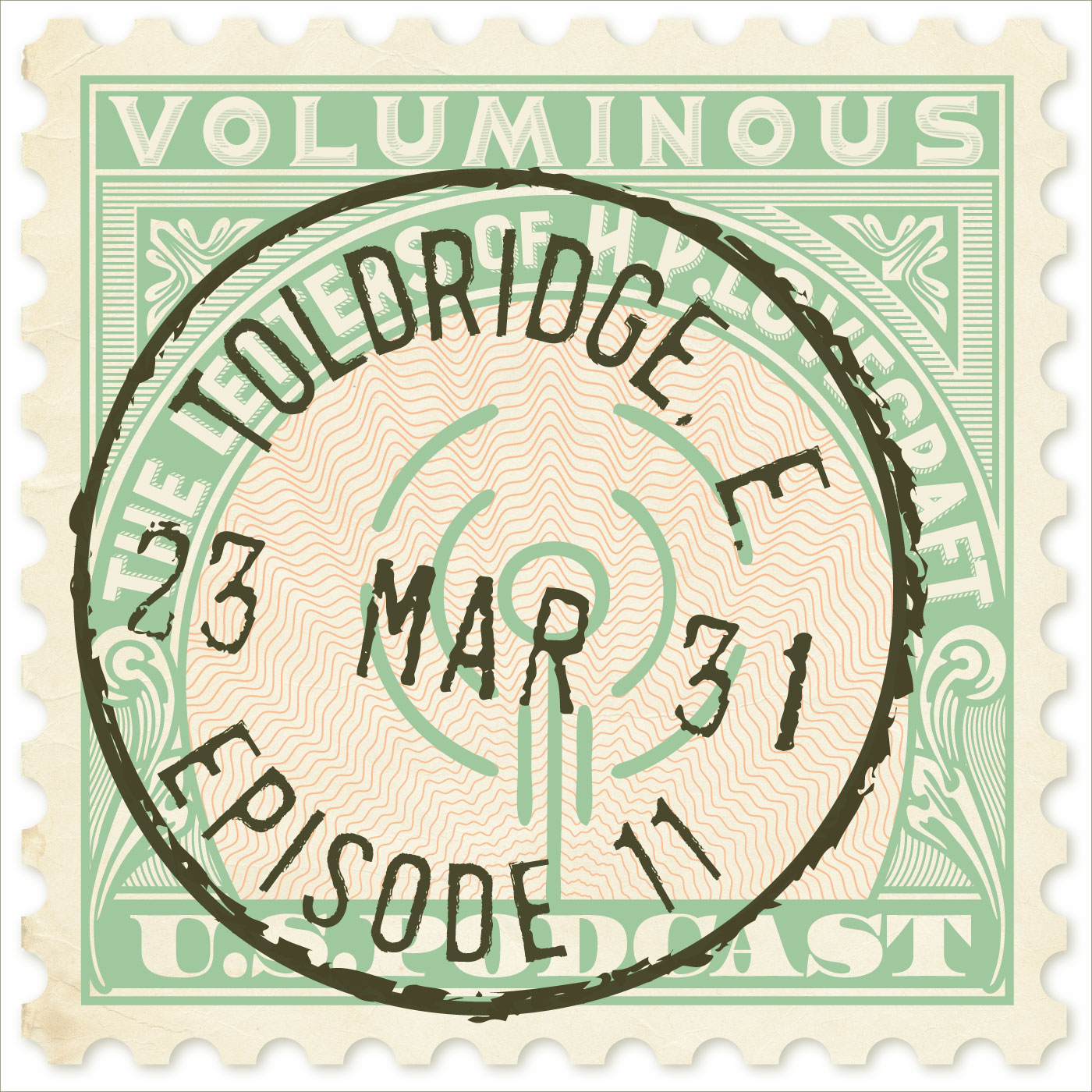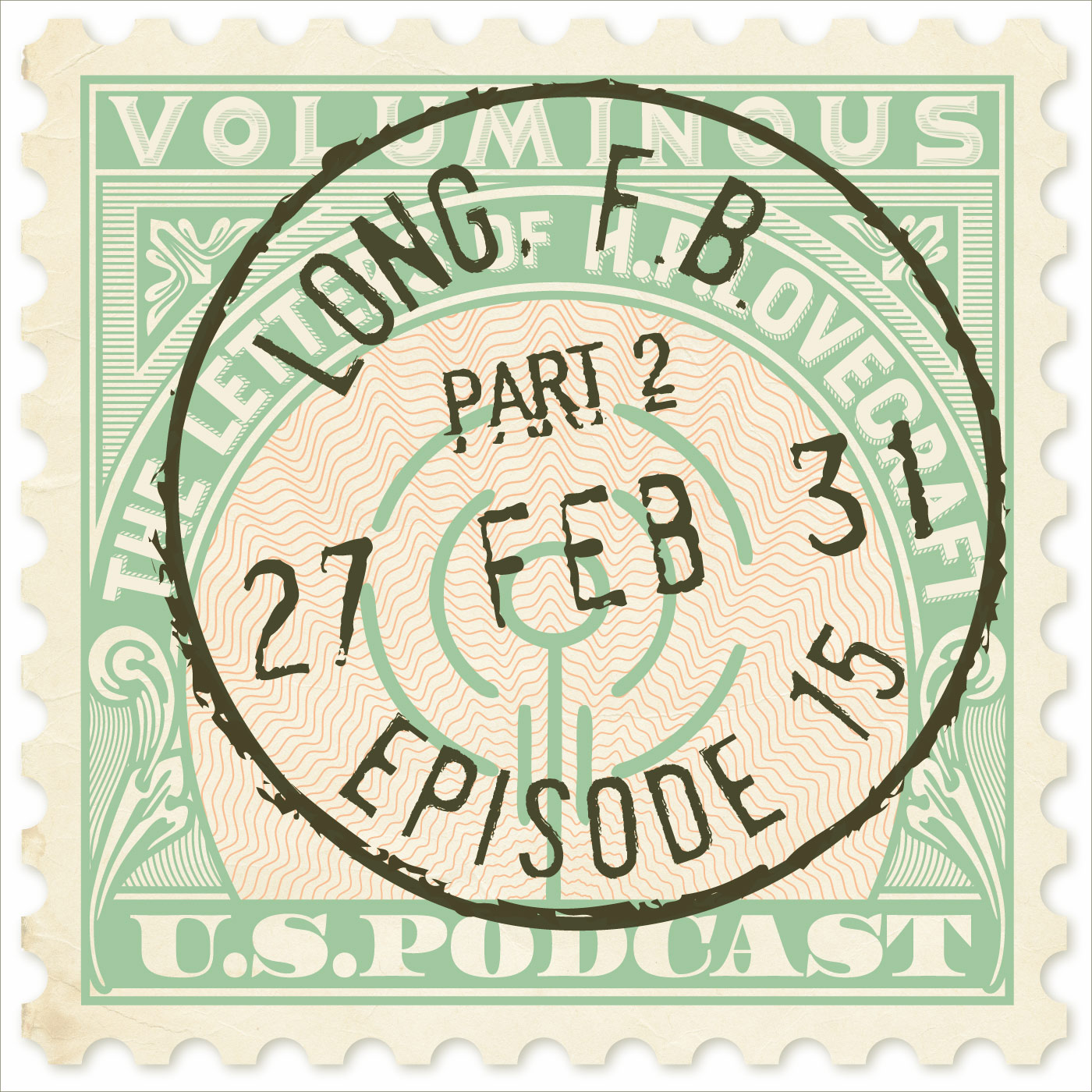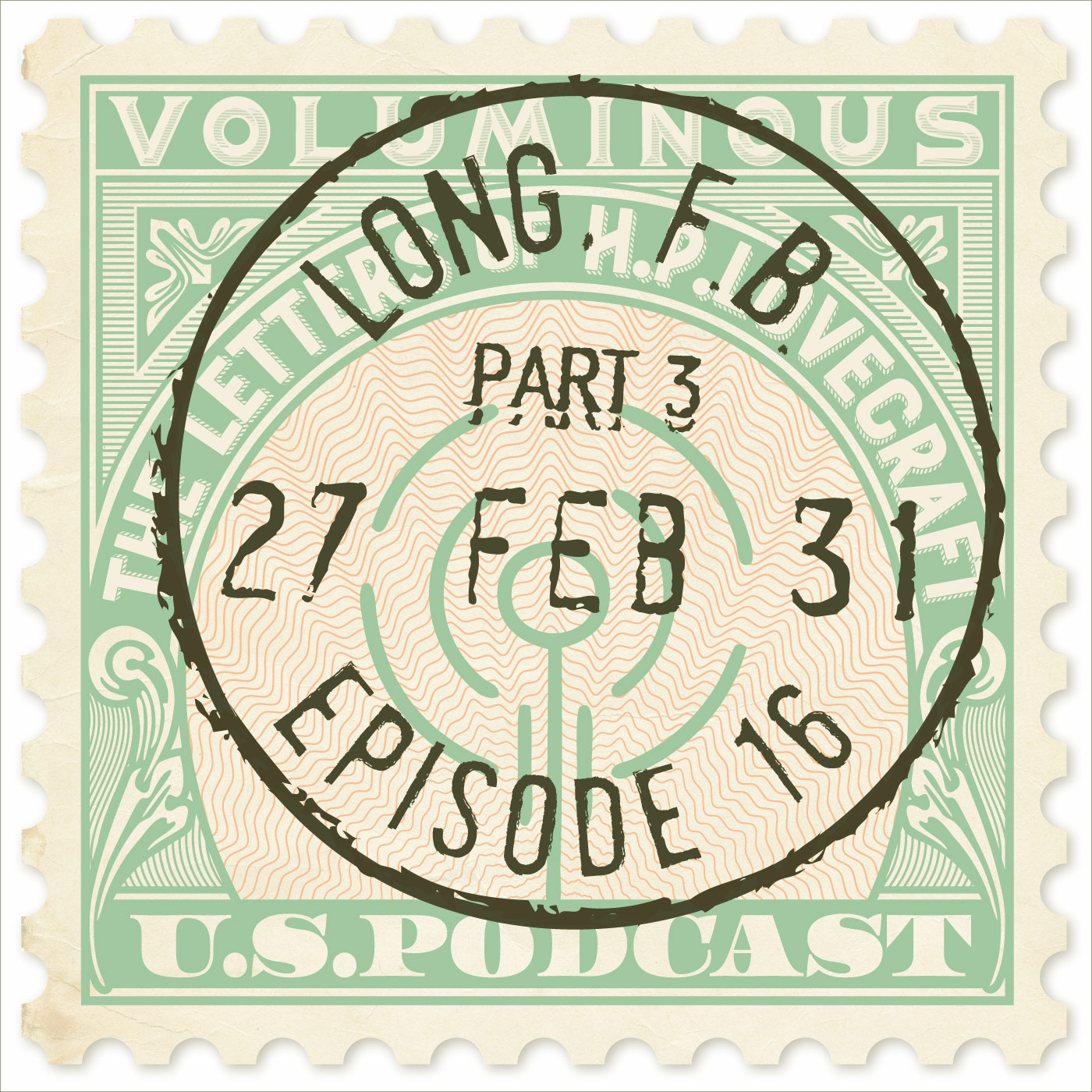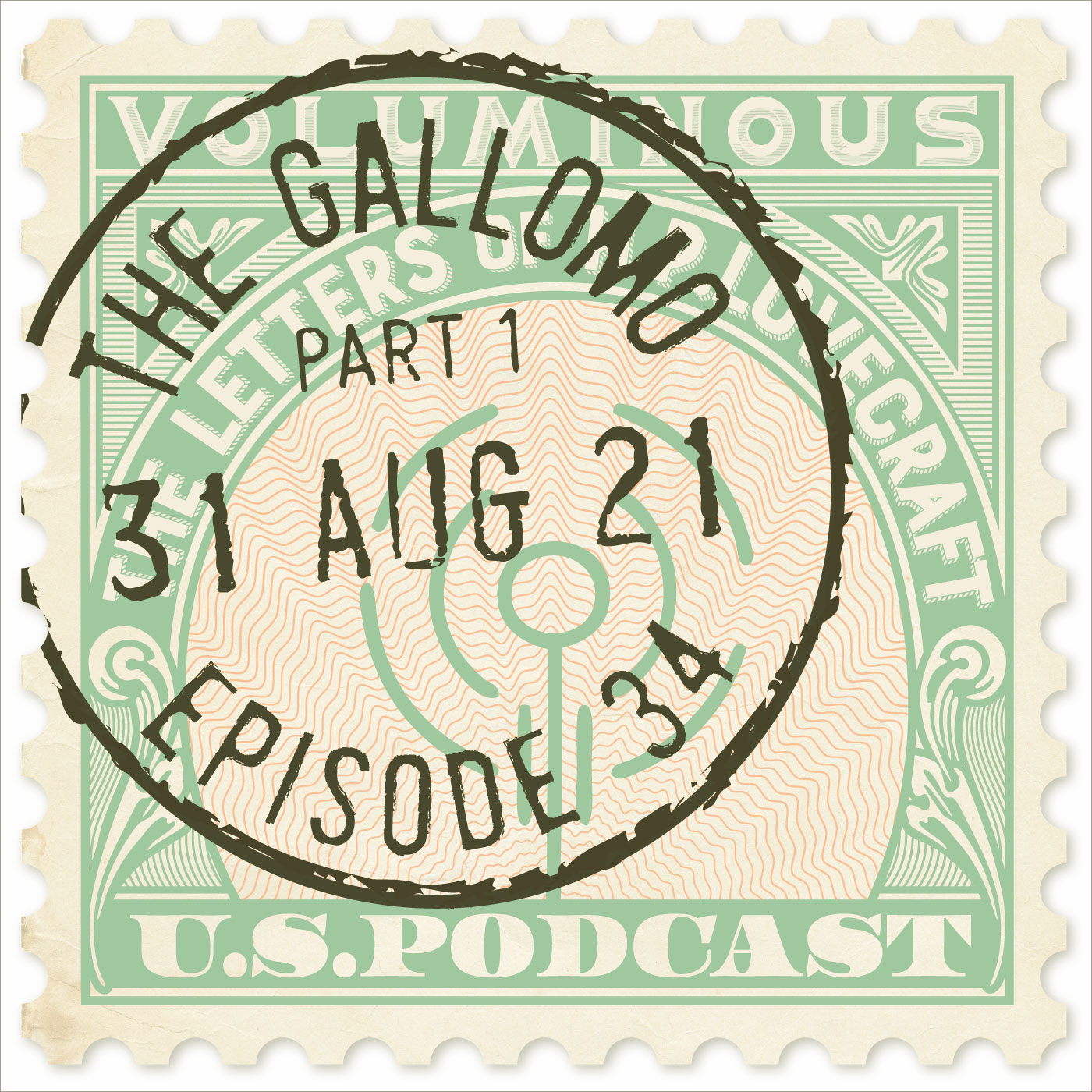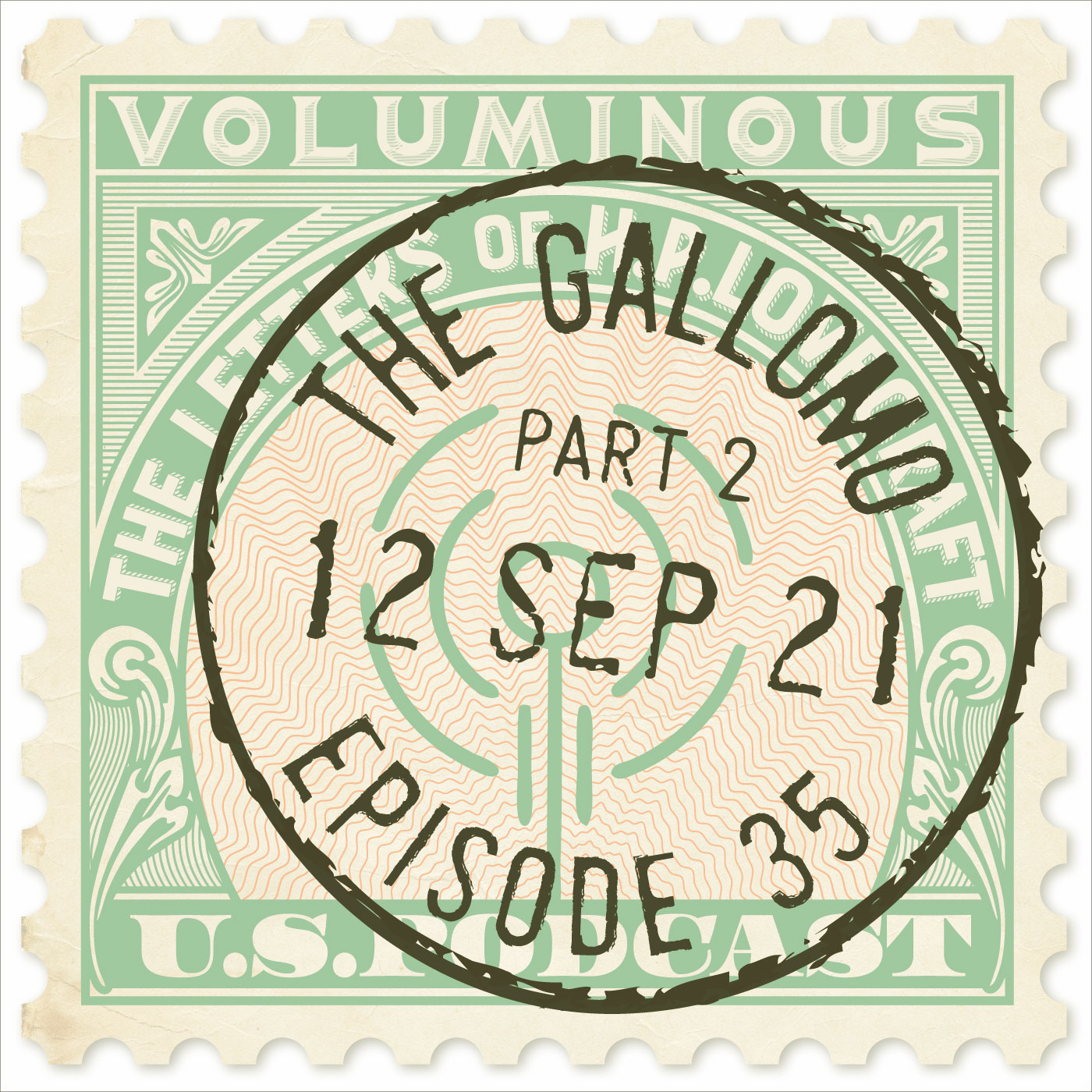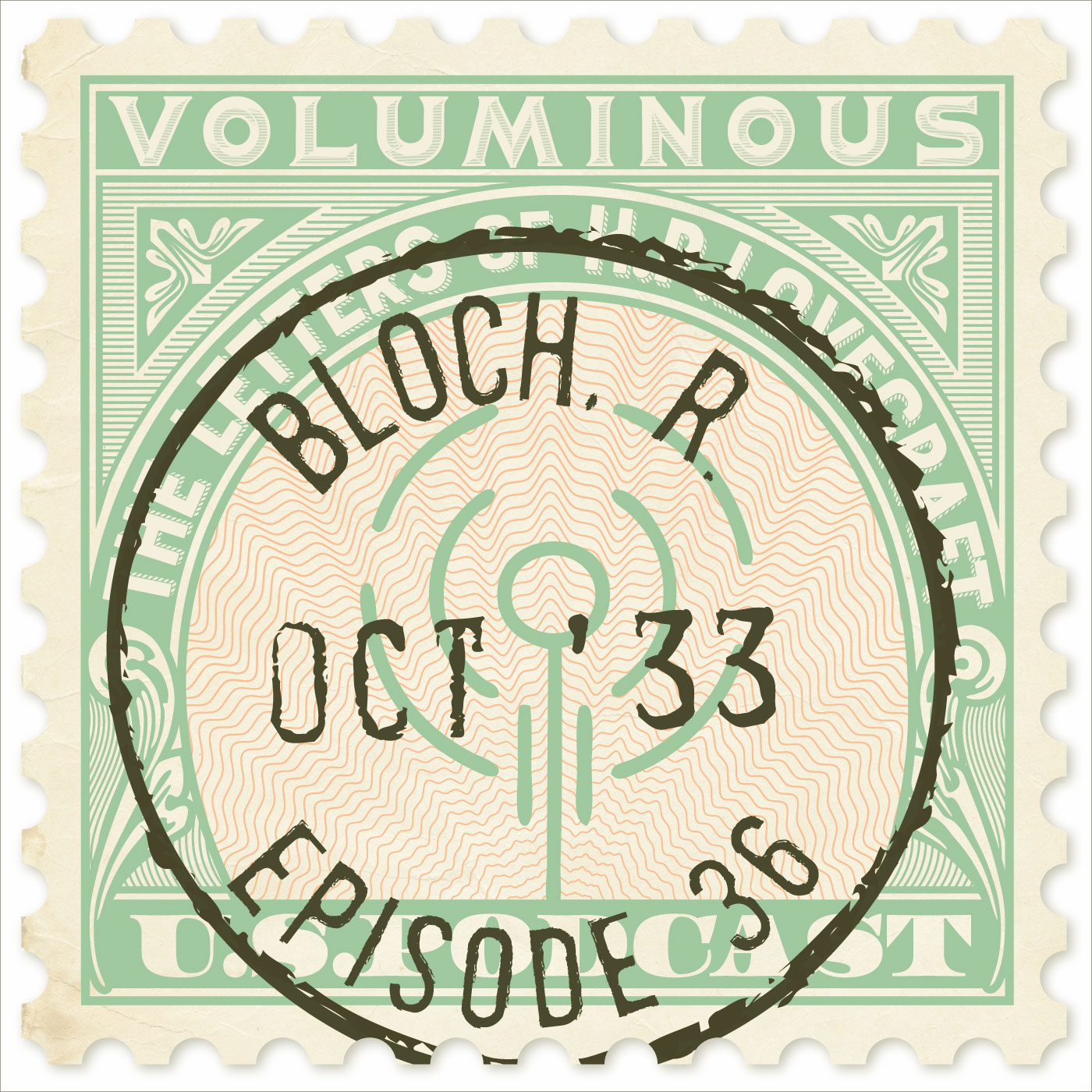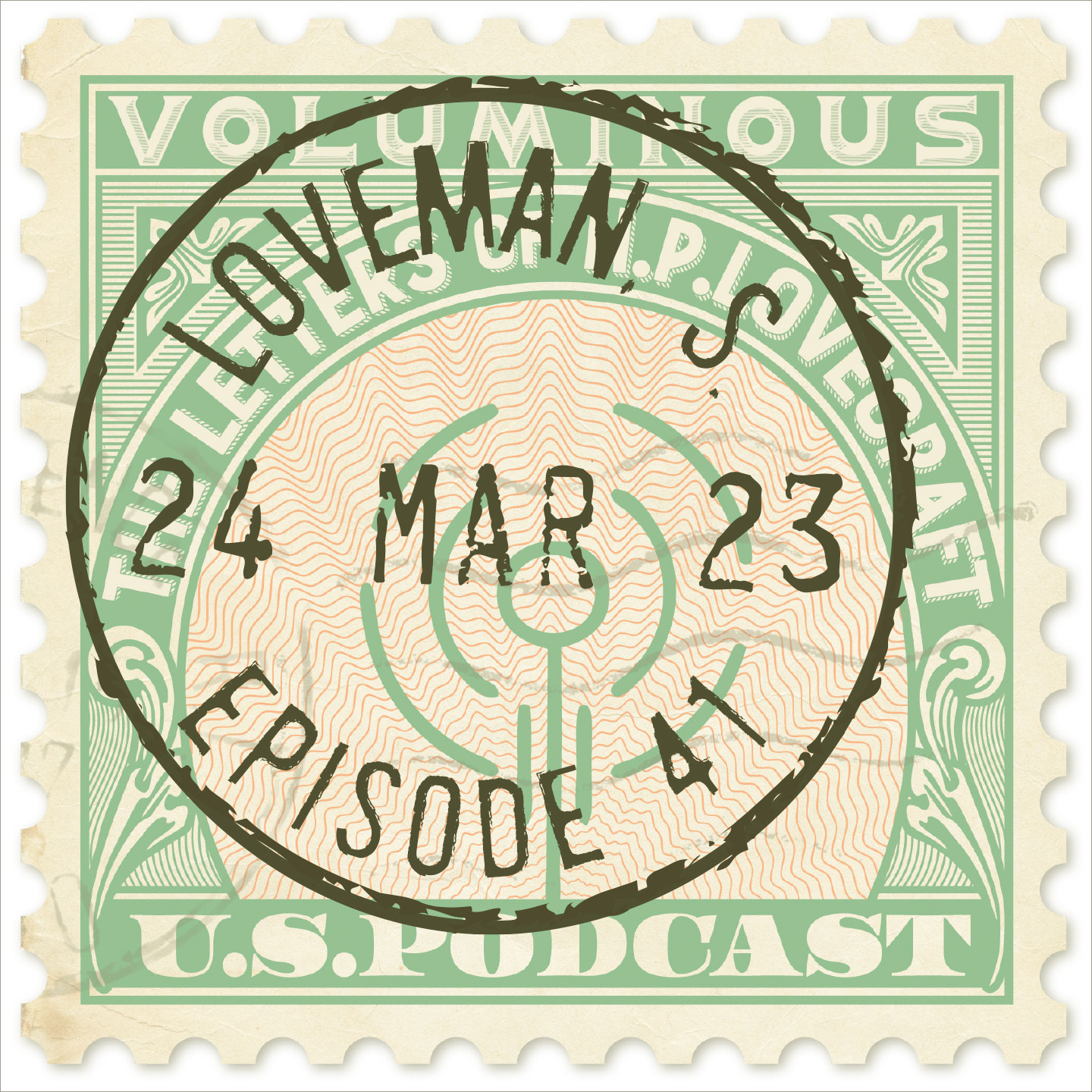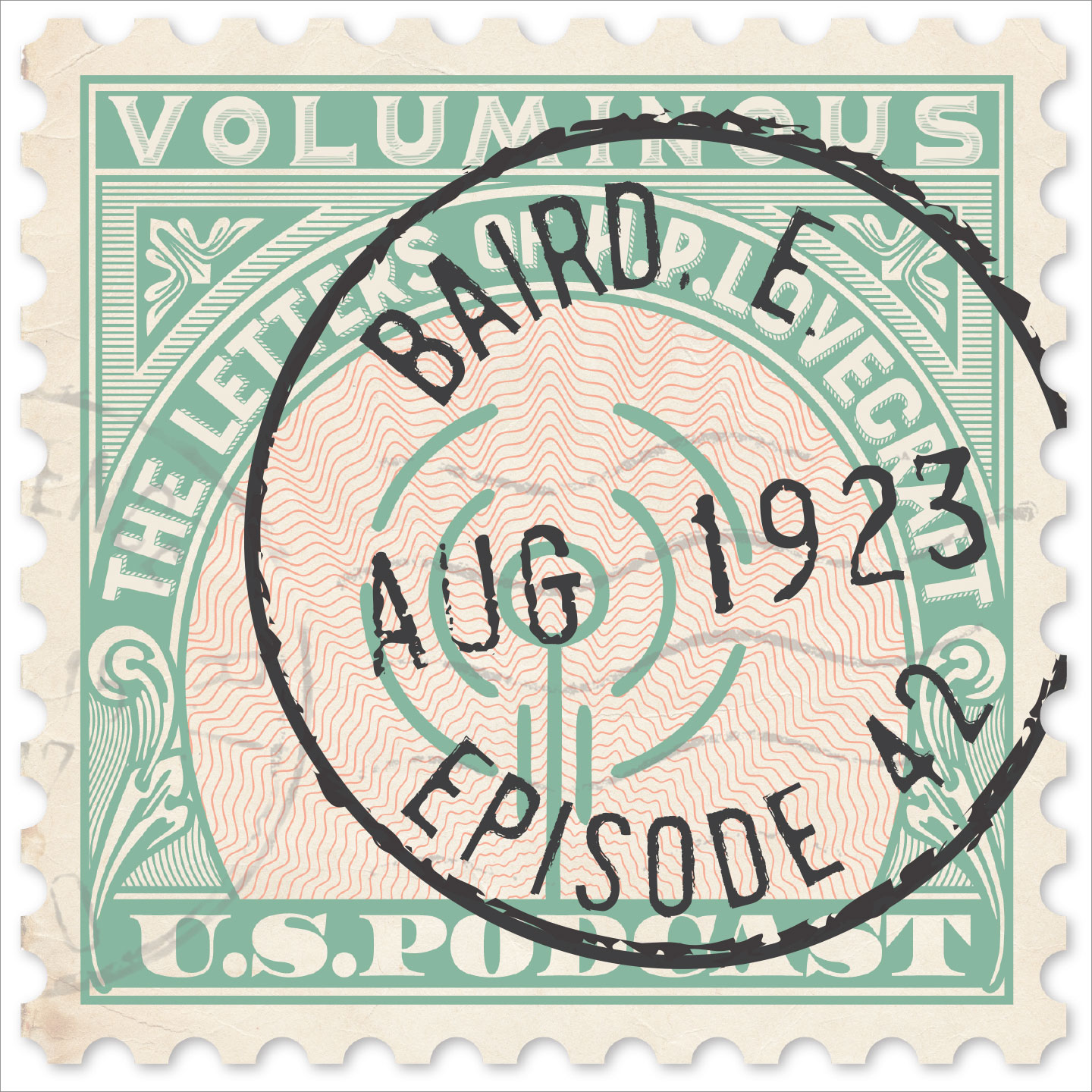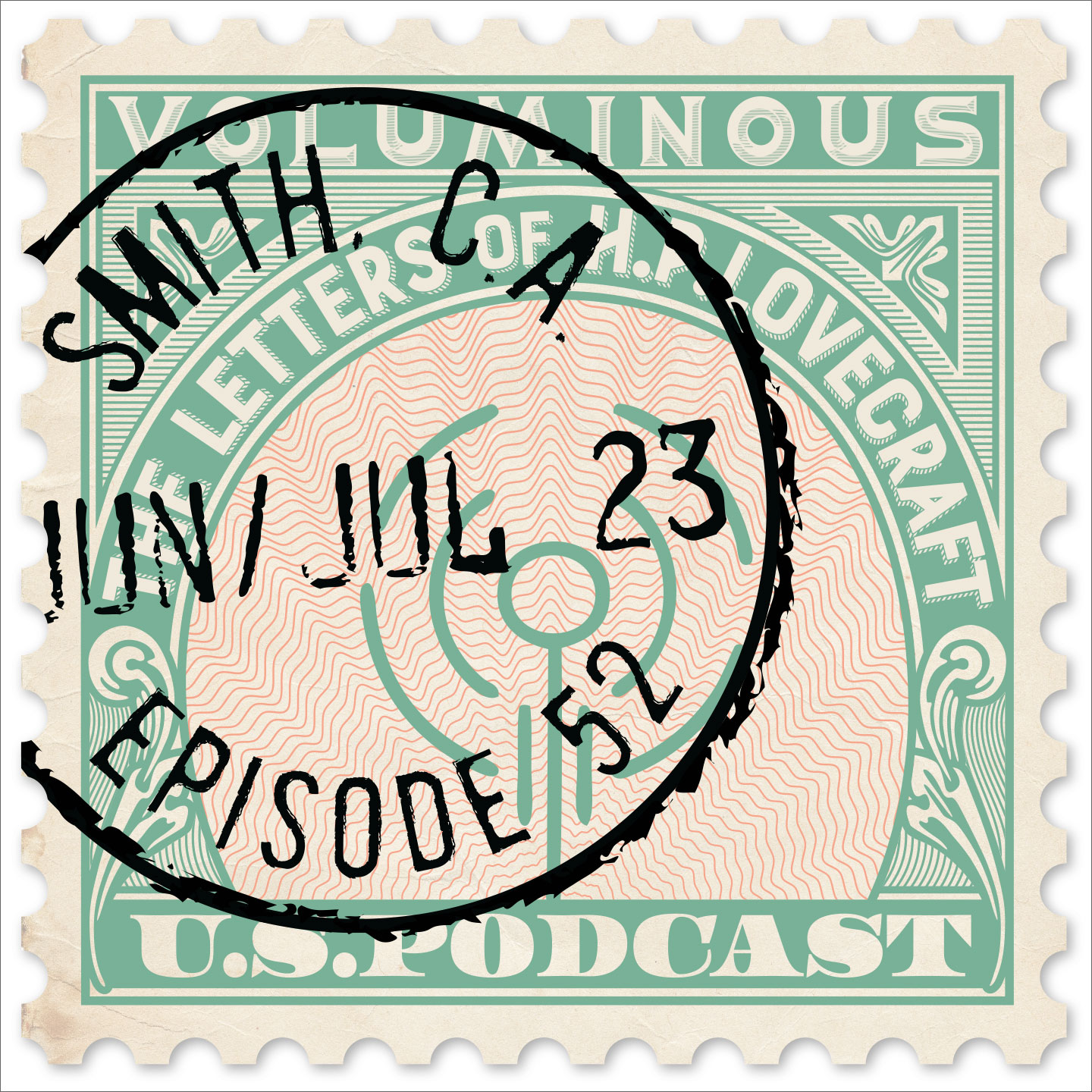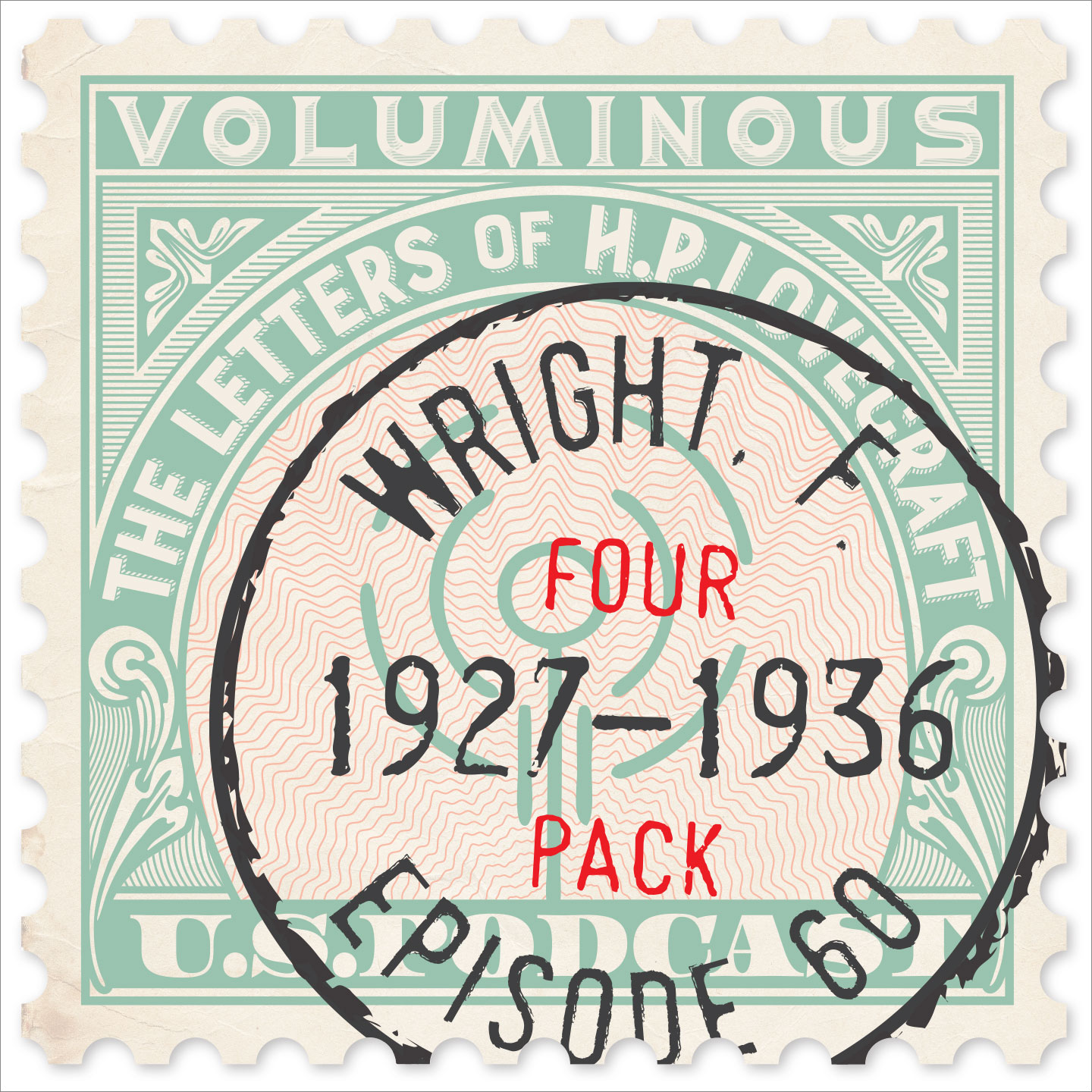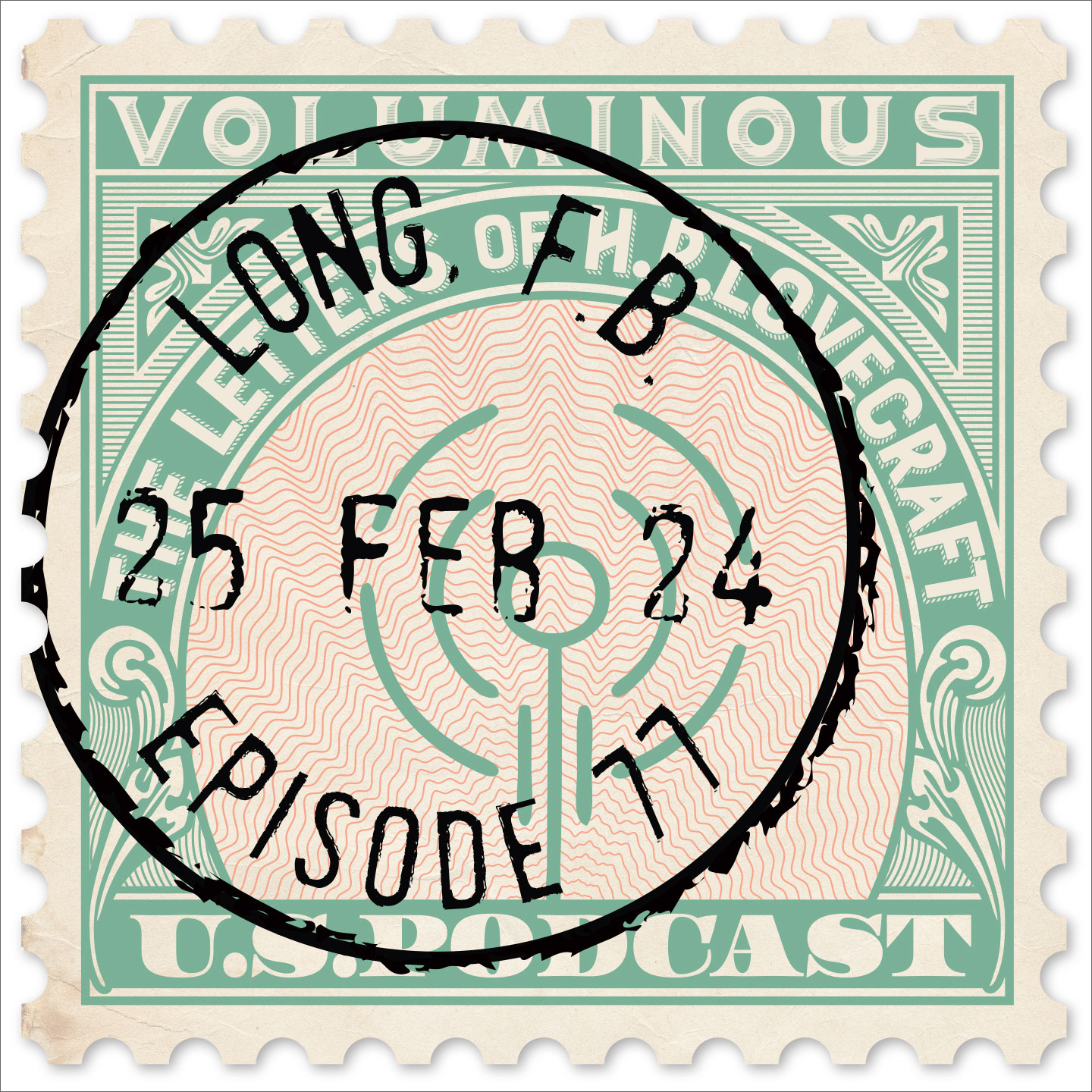
In addition to his classics of horror fiction, it is estimated that Lovecraft wrote 100,000 letters — or roughly 15 every day of his adult life — ranging from one-page diaries to seventy-page diatribes. Perhaps 20,000 of those letters have survived, in the hands of private collectors and at the John Hay Library in Providence.
In each episode of this podcast, we'll read one of these letters (or part of it) and then discuss it. In his letters HPL reveals an amazing breadth of knowledge of philosophy, science, history, literature, art and many other subjects, and forcefully asserts some highly considered opinions (some of which can be upsetting).
And of course his letters offer a fascinating window into his personal life and times. Although we've been working with Lovecraftian material for over 30 years, we still find interesting new things in his letters, and while we don't claim to be experts we look forward to sharing them with a wider audience.
Subscribe via iTunes, Stitcher or wherever you get podcasts! Or listen right here!
RSS Feed- Episode 74
- Posted July 3, 2022
Elizabeth and the New York Boys
In this lengthy letter from early November, 1924, HPL writes to his Aunt Lillian a detailed description of a month of his life while living with Sonia in New York. He recounts two outings to Elizabeth, New Jersey and numerous excursions with his New York pals, as well as the process of writing "The Shunned House". Bleep Warning: You'll hear bleeps at 22:14, 27:02 and 27:08.
Music by Troy Sterling Nies. Thanks to S.T. Joshi and David E. Schultz and Hippocampus Press for their book . Letters to Family and Family Friends. Also personal thanks to Donovan Loucks of the H.P. Lovecraft Archive, and to Dan Pratt for helping to re-create HPL's all-night walk with George Kirk.
 This letter is available to read in the Brown Digital Repository. Sadly none of the inclusions remain attached, but you can see that the entire 42-page letter is written on Hotel Vendig stationery left over from HPL and Sonia's honeymoon trip to Philadelphia. Pictured here is also one of the postcards HPL sent to Lillian during his trip to Elizabeth, NJ.
This letter is available to read in the Brown Digital Repository. Sadly none of the inclusions remain attached, but you can see that the entire 42-page letter is written on Hotel Vendig stationery left over from HPL and Sonia's honeymoon trip to Philadelphia. Pictured here is also one of the postcards HPL sent to Lillian during his trip to Elizabeth, NJ.
Speaking of postcards, HPL says that he hopes that the Temple of Music in Providence would soon be immortalised in postcard form. It was, and you can see one of those postcards on the page for Episode 63. The photo they used for this postcard was taken at the very concert HPL and Lillian attended, and they are somewhere in that crowd!
 We have worked out this calendar of the events HPL describes in the letter, and it certainly shows at a glance what a busy month it was for him. Click on the calendar to see it at full size.
We have worked out this calendar of the events HPL describes in the letter, and it certainly shows at a glance what a busy month it was for him. Click on the calendar to see it at full size.
 Here is the full-page cutting from the New York Times that HPL included with this letter about the discoveries at Carthage. Just click on it to see it bigger. To see more newspaper coverage of the archaeology happening in Carthage and at Leptis Magna, CLICK HERE! You can see some motion picture footage from Count Byron Khun de Prorok's Carthage expedition on the web page for Episode 9!
Here is the full-page cutting from the New York Times that HPL included with this letter about the discoveries at Carthage. Just click on it to see it bigger. To see more newspaper coverage of the archaeology happening in Carthage and at Leptis Magna, CLICK HERE! You can see some motion picture footage from Count Byron Khun de Prorok's Carthage expedition on the web page for Episode 9!
 The Baring-Gould books HPL mentions were presumably Curious Myths of the Middle Ages (1866) and The Book of Werewolves (1865). In 1904 he also wrote A Book of Ghosts. Sabine Baring-Gould was a very interesting and prolific guy!
The Baring-Gould books HPL mentions were presumably Curious Myths of the Middle Ages (1866) and The Book of Werewolves (1865). In 1904 he also wrote A Book of Ghosts. Sabine Baring-Gould was a very interesting and prolific guy!
 HPL cashed in his Scribner's credit from Henneberger to obtain, among numerous other things, four books by Lord Dunsany including Plays of Near & Far (1922). One of those plays is "Cheezo". Thanks to science, you can read it on the internet!
HPL cashed in his Scribner's credit from Henneberger to obtain, among numerous other things, four books by Lord Dunsany including Plays of Near & Far (1922). One of those plays is "Cheezo". Thanks to science, you can read it on the internet!

 HPL enclosed this newspaper clipping of an editorial in defense of Elizabeth, New Jersey. It inspired him to follow through with an old plan to visit that town and see its many colonial houses. Here you can see a few of the ones he highlighted. Top left: the DeHart house. Top right: the Hetfield house, before it lost its well-sweep. In the center are plans for the "Old Chateau" of the Jouets. Bottom left: the Carteret Arms. Bottom right: the Ogden-Belcher mansion. Sadly, the extremely creepy house he saw that inspired him to write "The Shunned House" is long gone. We were never able to find a copy of the guidebook he also sent to Lillian, but if you are still craving more pictures you will enjoy this guide from the Elizabeth Public Library.
HPL enclosed this newspaper clipping of an editorial in defense of Elizabeth, New Jersey. It inspired him to follow through with an old plan to visit that town and see its many colonial houses. Here you can see a few of the ones he highlighted. Top left: the DeHart house. Top right: the Hetfield house, before it lost its well-sweep. In the center are plans for the "Old Chateau" of the Jouets. Bottom left: the Carteret Arms. Bottom right: the Ogden-Belcher mansion. Sadly, the extremely creepy house he saw that inspired him to write "The Shunned House" is long gone. We were never able to find a copy of the guidebook he also sent to Lillian, but if you are still craving more pictures you will enjoy this guide from the Elizabeth Public Library.
 HPL and Kirk had lunch at the Automat in Times Square. The world's first automats were opened in 1895 in Berlin, and the first one in America was opened by Horn and Hardart in 1902 in Philadelphia. They opened their first New York automat in 1912, and by 1924 had several locations throughout the city. In addition to walls full of food vending machines, the automat also had a cafeteria-style steam table where patrons could load up a tray with hot selections. The Horn and Hardart chain was very successful until fast food restaurants came along in the 1950s.
HPL and Kirk had lunch at the Automat in Times Square. The world's first automats were opened in 1895 in Berlin, and the first one in America was opened by Horn and Hardart in 1902 in Philadelphia. They opened their first New York automat in 1912, and by 1924 had several locations throughout the city. In addition to walls full of food vending machines, the automat also had a cafeteria-style steam table where patrons could load up a tray with hot selections. The Horn and Hardart chain was very successful until fast food restaurants came along in the 1950s.
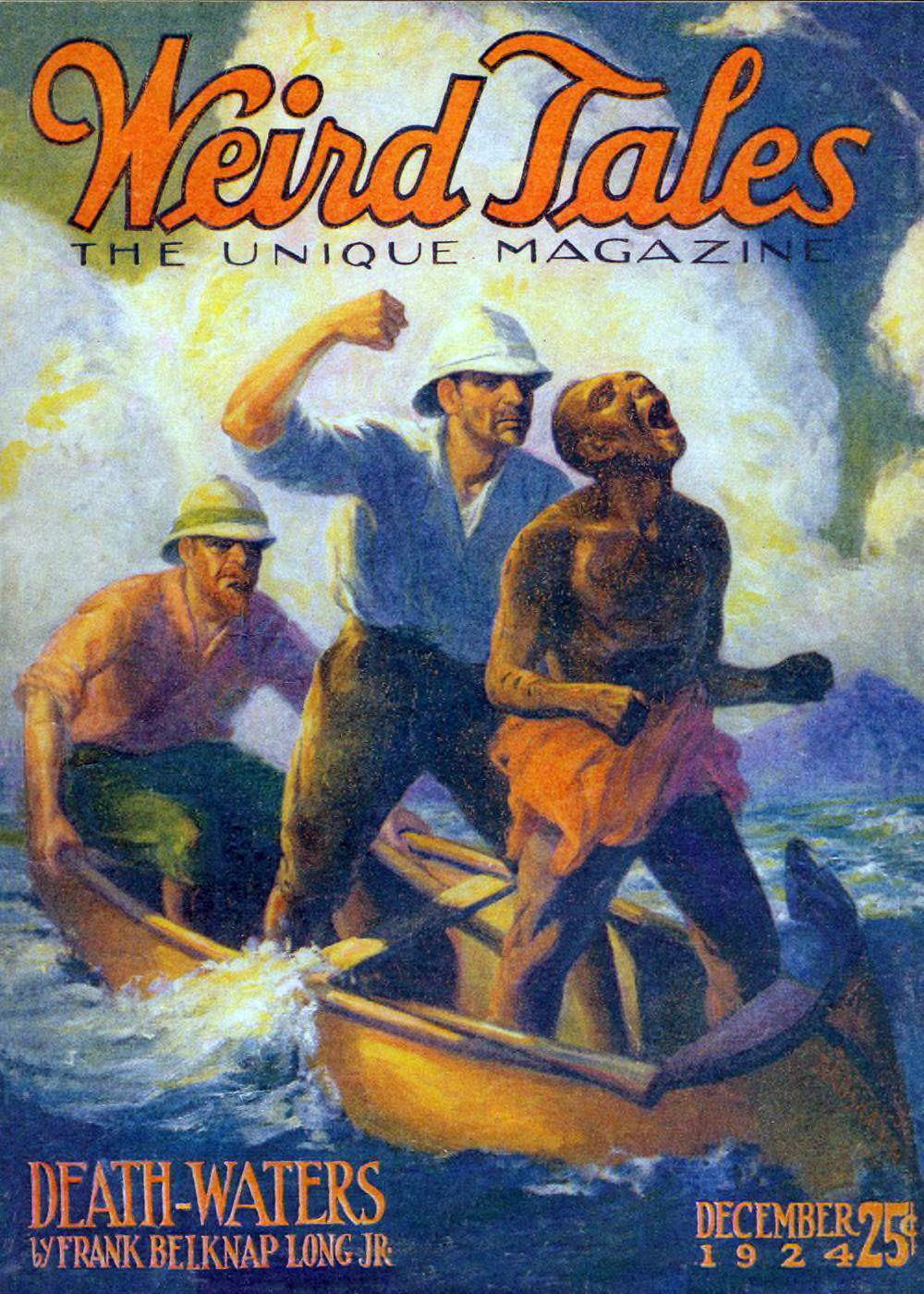 Lovecraft and Kirk went rather far out of their way to see the Jane Teller mansion near the foot of the Queensborough Bridge. We don't know if HPL was aware of the charred human remains that had been found in the house, but we're certain he was interested in Teller's dedicated preservation of colonial-era folkways. For a very interesting profile of this "acme of anachronism", CLICK HERE!
Lovecraft and Kirk went rather far out of their way to see the Jane Teller mansion near the foot of the Queensborough Bridge. We don't know if HPL was aware of the charred human remains that had been found in the house, but we're certain he was interested in Teller's dedicated preservation of colonial-era folkways. For a very interesting profile of this "acme of anachronism", CLICK HERE!
HPL introduced William Sechrist and Frank Belknap Long to each other during this busy month, and they got along famously. Long had the cover story for the newest issue of Weird Tales to show off, and you can READ IT ONLINE.
 HPL took his friend Sechrist sightseeing all over New York on November 5th, and here are some of the buildings they visited. Top left: The storied Brevoort House hotel, where Sechrist was staying. It had hosted the rich and famous since 1845, in a few years it would be associated with Charles Lindbergh. It was torn down in 1954. Top right: the Poe Cottage, the final home of one of Lovecraft's favorite authors. Bottom left: the Dyckman house, the last farmhouse in Manhattan. Bottom right: the Van Cortlandt mansion, former home of one of the wealthiest slave-owning families in New York.
HPL took his friend Sechrist sightseeing all over New York on November 5th, and here are some of the buildings they visited. Top left: The storied Brevoort House hotel, where Sechrist was staying. It had hosted the rich and famous since 1845, in a few years it would be associated with Charles Lindbergh. It was torn down in 1954. Top right: the Poe Cottage, the final home of one of Lovecraft's favorite authors. Bottom left: the Dyckman house, the last farmhouse in Manhattan. Bottom right: the Van Cortlandt mansion, former home of one of the wealthiest slave-owning families in New York.
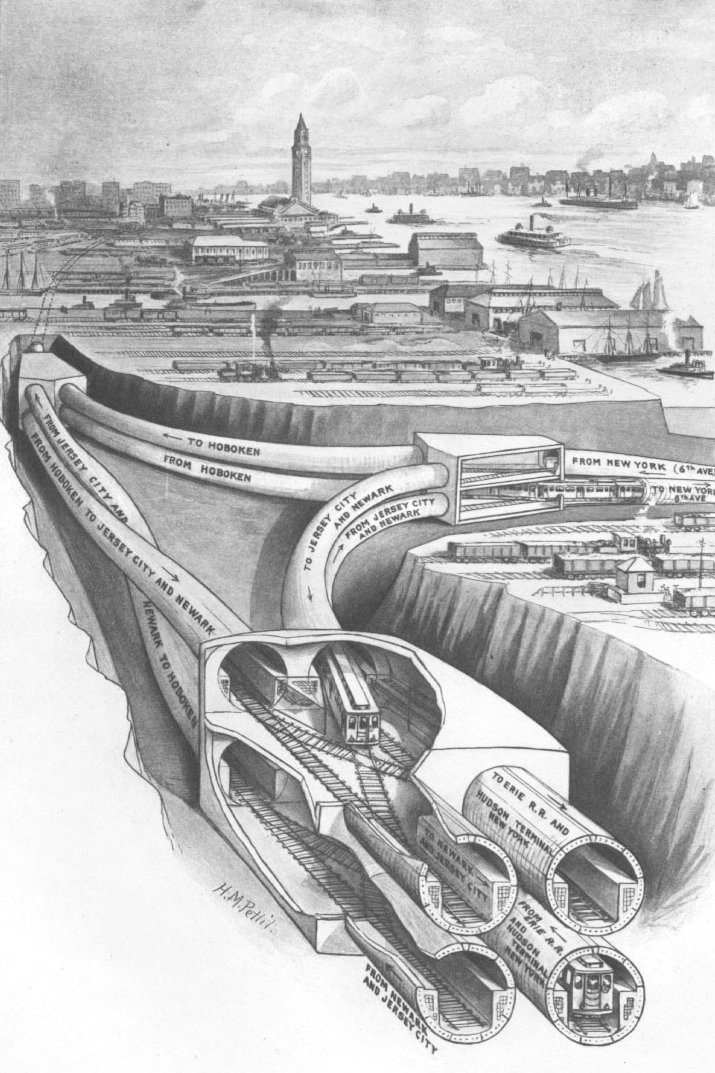 Lovecraft was astonished to discover that the subway trains he and Sechrist rode on were part of a two-story tunnel system. Pictured here are the Hudson Tubes, part of the insanely elaborate and mostly invisible transportation infrastructure of NYC. Just click the picture to see it bigger.
Lovecraft was astonished to discover that the subway trains he and Sechrist rode on were part of a two-story tunnel system. Pictured here are the Hudson Tubes, part of the insanely elaborate and mostly invisible transportation infrastructure of NYC. Just click the picture to see it bigger.
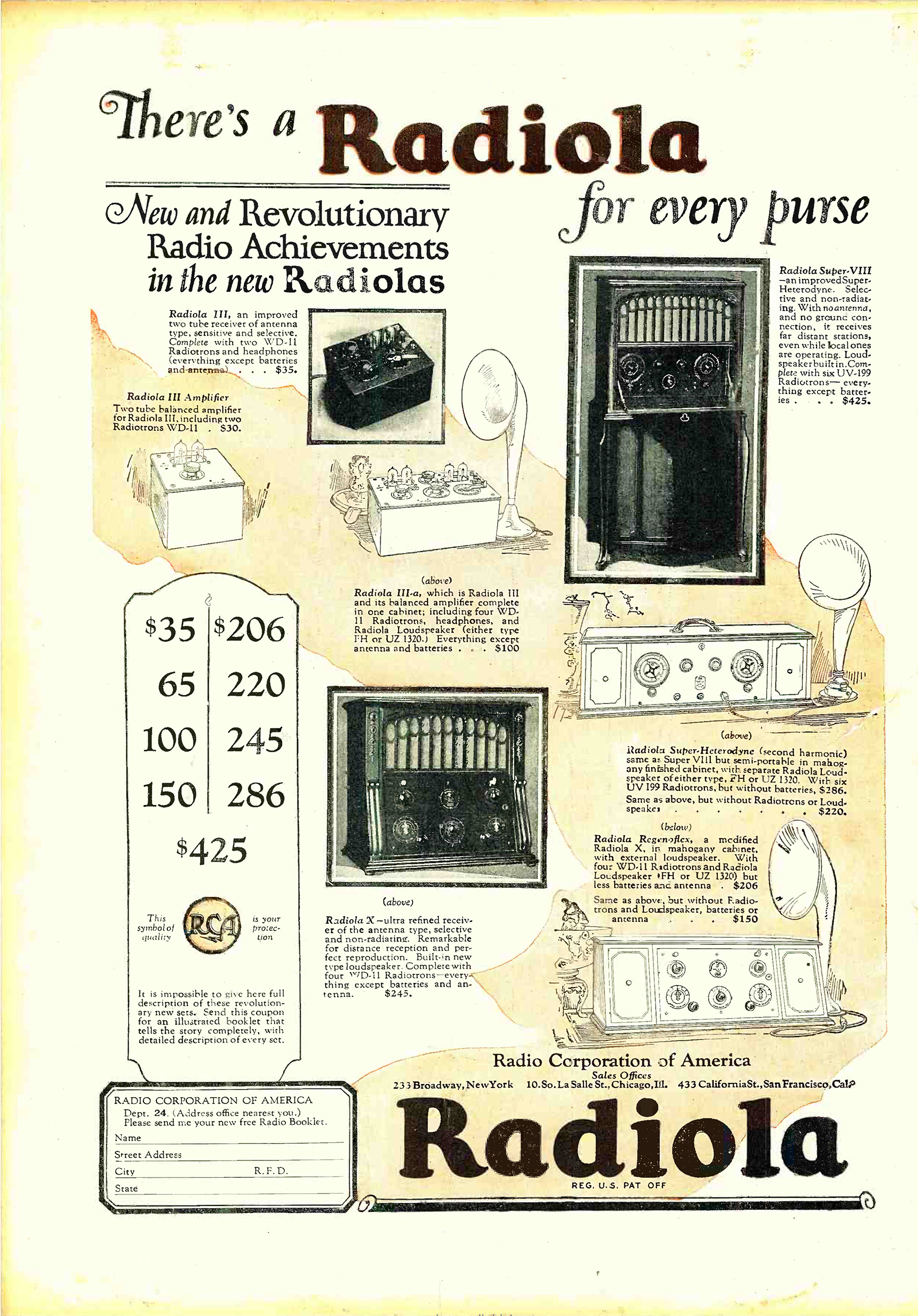 Samuel Loveman brought along a $100 radio set to the special Friday night meeting of the gang at Kirk's place. In today's money, that would be a little over $1700. We don't know if it was specifically the RCA Radiola III-a set seen in this ad, but it was almost certainly quite comparable. It would have weighed about twelve pounds, not including the battery or speaker, which would have been carried separately, unless Kirk had one at his home already. Click on the image to see it at a bigger size.
Samuel Loveman brought along a $100 radio set to the special Friday night meeting of the gang at Kirk's place. In today's money, that would be a little over $1700. We don't know if it was specifically the RCA Radiola III-a set seen in this ad, but it was almost certainly quite comparable. It would have weighed about twelve pounds, not including the battery or speaker, which would have been carried separately, unless Kirk had one at his home already. Click on the image to see it at a bigger size.
HPL wraps up the letter with his thoughts about the election that occurred while he was writing it, expressing his relief that the "scoundrel Toupin" did not win the race for Rhode Island governor. This is a reference to Felix Toupin, a Democrat who had led a 42-hour filibuster in an attempt to pass some progressive legislation against vehement partisan opposition. The filibuster led to a fistfight in the Rhode Island senate chamber, a gas bomb attack by the Republicans, and ultimately to Toupin's loss in the gubernatorial election. Rhode Island politics in 1924 were apparently quite a mess.





